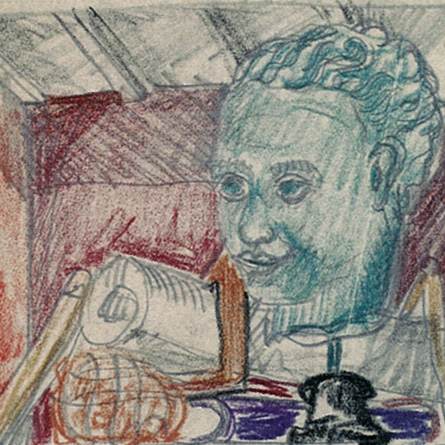
Tomaso Buzzi


Tomaso Buzzi
(Sondrio 1900 – Rapallo 1981)
Architect, landscape artists, interior and industrial designer, Tomaso Buzzi is among the most interesting personalities of the 20th-century art scene. Acquainted with other young architects such as Giovanni Muzio, Giuseppe De Finetti and especially Gio Ponti, Buzzi became a member of the “Novecento Milanese” group; in the mid-1920s he was among the founders of the “Club degli Urbanisti”, a group of urban designers working at the “Forma Urbis Mediolani” responding to an open call for a new urban plan project for Milan in 1927. The Milanese Club degli Urbanisti was inspired by the Wiener Werkstätte. He was also member of the “Il Labirinto” interior design company. Artistic director at Venini, he collaborated with the leading glass artists of the time. Some of his projects were presented in 1927 at the III International Exhibition of Decorative Arts in Monza. Buzzi’s creativity also emerged in the applied arts, spanning from furniture design to pottery, lace, lamps, watches and a variety other object-typologies. Buzzi was an atypical figure of the 20th-century Italian cultural scene (his vast humanistic and literary culture can be appreciated in the refined quotes and references to ancient art he incorporated in his work), an architect with an aristocratic and upper-middle-class clientele, and a profound art connoisseur and collector, also attentive to the world of craftmanship due to his connections with his homeland Valtellina. His interest for the art of gardening – where his language finds balance between a revisitation of the cultural legacy of the Italian Garden and a more contemporary language – emerged in the late 1920s in a number of articles that were published in the magazine Domus and in his participation in the 1931
Palladian villa in Maser for Count Volpi di Misurata (in particular the villa’s access avenue, forecourt, nymphaeum at the back of the building, and small “rose garden”), and his unique intervention since 1955 at Villa Invernizzi in Trenzanesio, with its spectacular arabesque-like water features. A turning point in his career occurred in 1956 when following Marquis Paolo Misciattelli’s recommendation he bought the Convento della
Look at the card of Villa Maser Look at the card of
 Share on social
Share on social